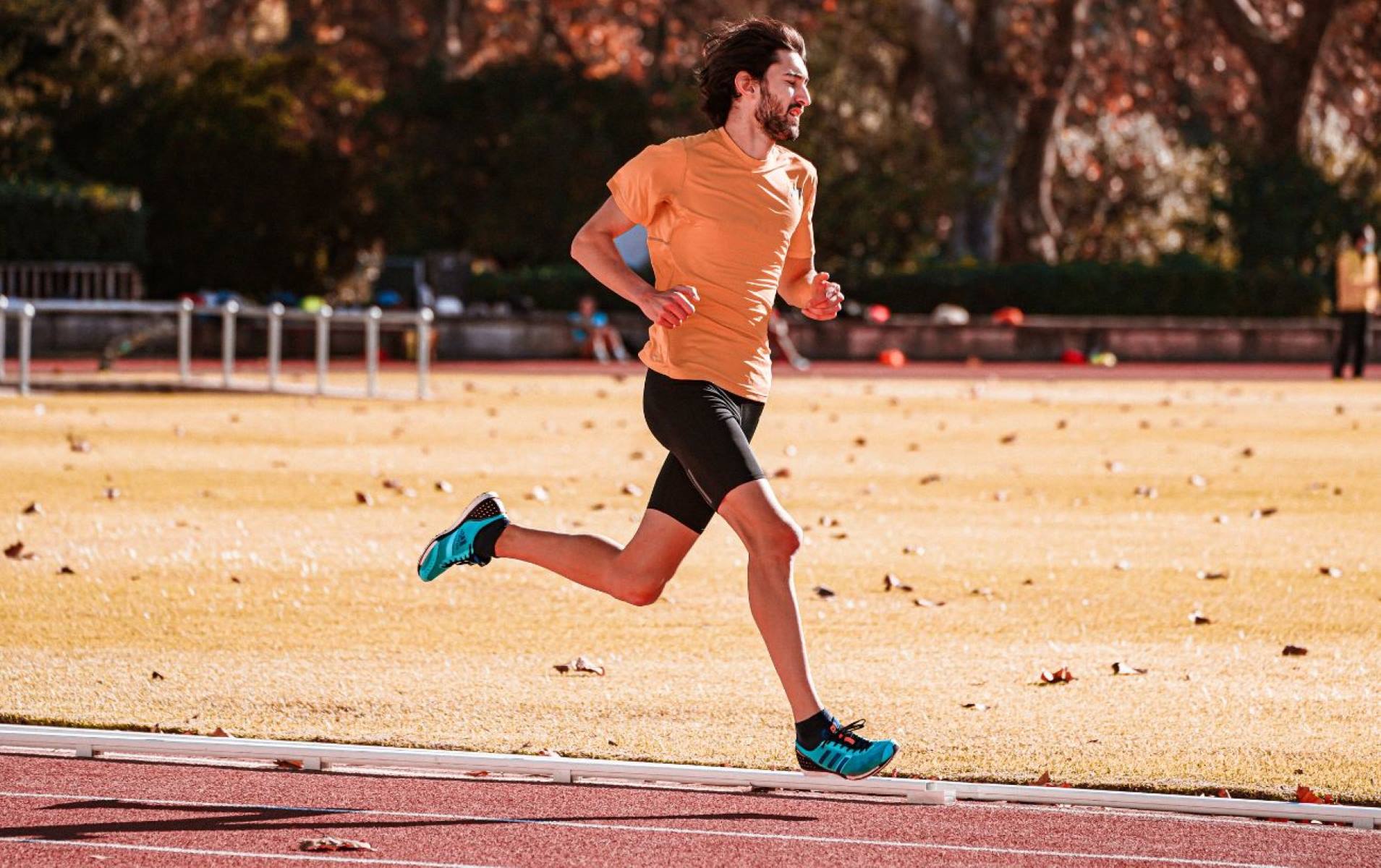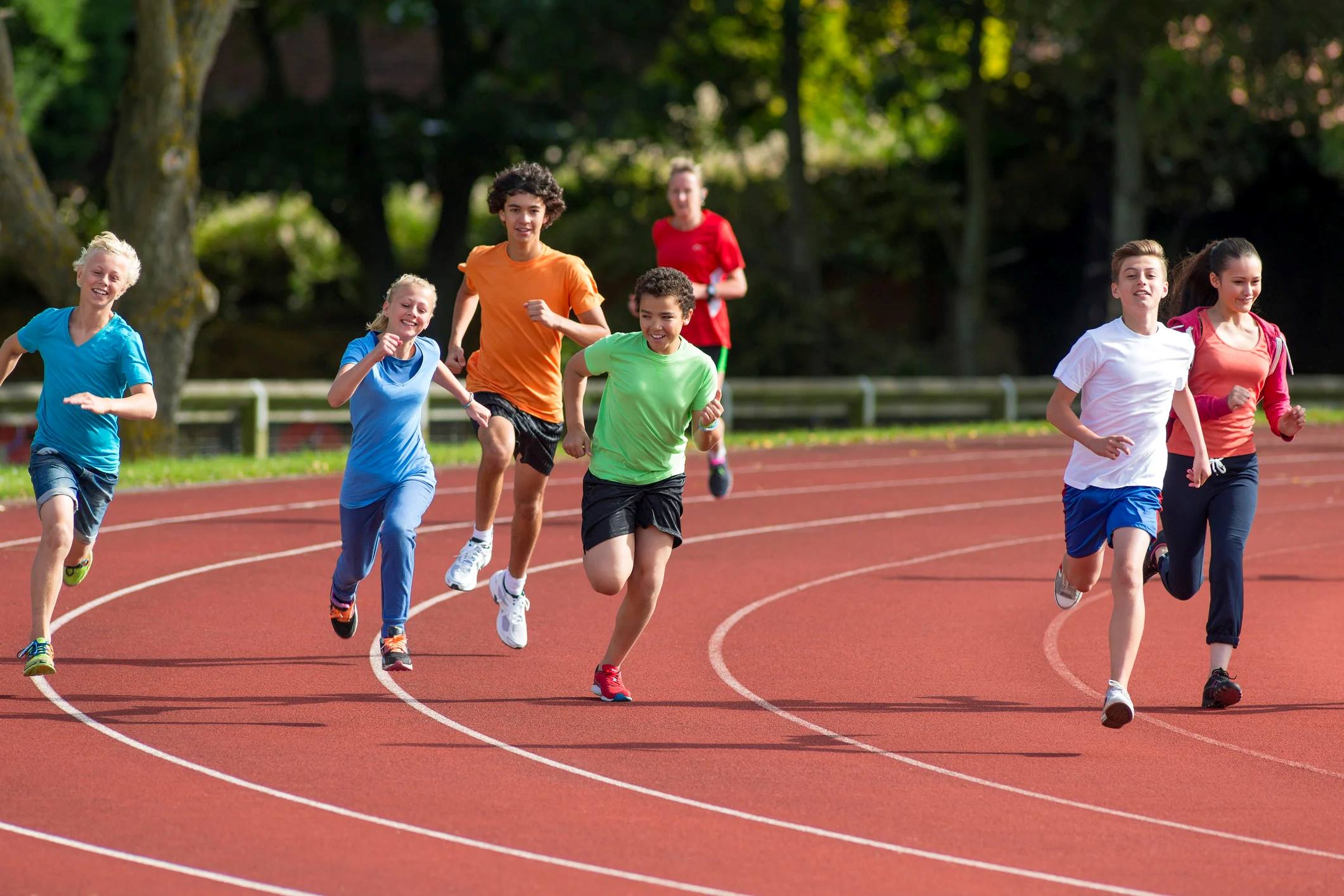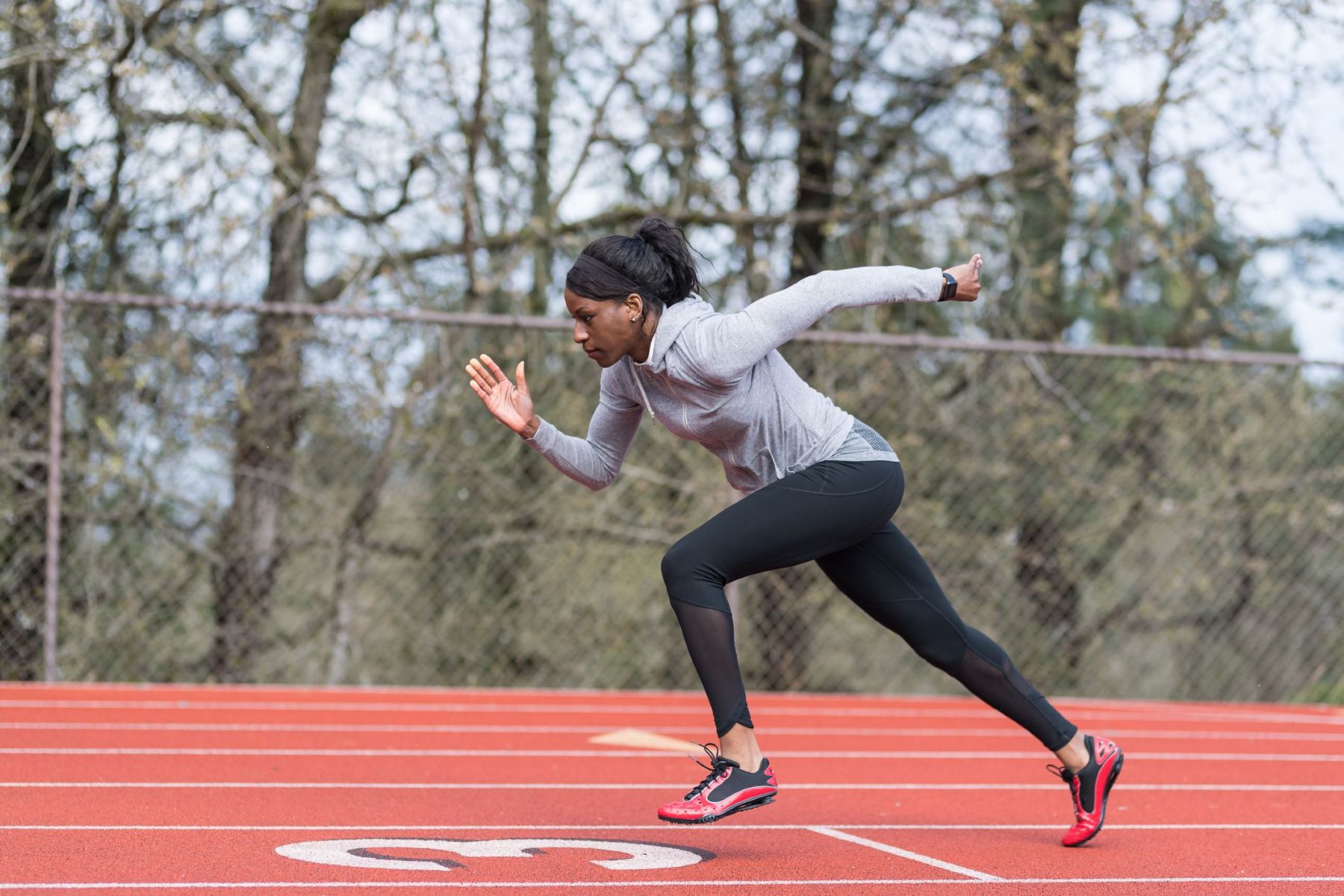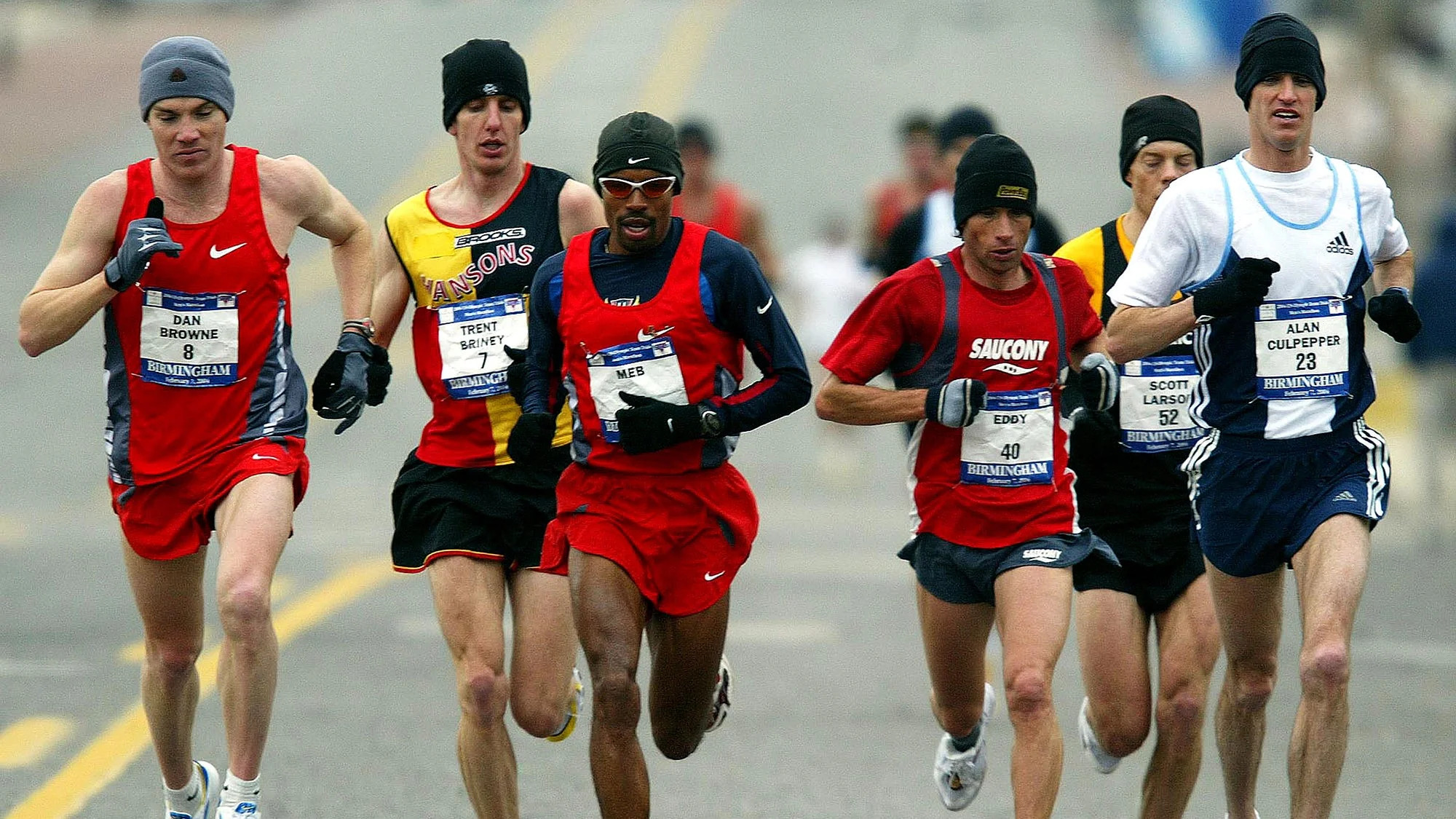

Featured
How Long Can You Sprint
Modified: August 21, 2023
Find out the maximum distance you can sprint without slowing down. Discover the featured methods to improve your sprinting endurance and speed.
Introduction
Sprinting is an exhilarating and dynamic form of exercise that involves running at high speeds over short distances. It is not only a popular sport but also an essential component of various athletic disciplines, including track and field, football, basketball, and many others. Whether you are an athlete looking to improve your speed and performance or simply someone seeking an intense and efficient workout, sprinting can be a valuable addition to your fitness regimen.
Unlike long-distance running, which focuses on endurance and stamina, sprinting relies on explosive power and quick bursts of energy. It pushes your body to its limits, engaging multiple muscle groups and cardiovascular systems. Sprinting not only enhances your physical capabilities but also boosts mental strength and discipline. The intense nature of sprinting stimulates the release of endorphins, which can improve mood and reduce stress levels.
As one of the most natural forms of human movement, sprinting taps into our inherent speed and agility. From the days of our ancestors hunting for prey on the savannah to the arena of modern-day sports, sprinting has evolved as a fundamental aspect of our athletic abilities. The thrill of sprinting lies in the challenge of reaching your maximum potential in a limited amount of time.
In this article, we will explore the world of sprinting, its benefits, the muscles it engages, the factors that affect sprinting duration, and how to improve your sprinting endurance. By understanding the mechanics and techniques of sprinting, you can optimize your performance and achieve your fitness goals. So let’s lace up our shoes, get ready to explode off the starting line, and discover the exhilarating world of sprinting!
Definition of Sprinting
Sprinting is a high-intensity running exercise that involves covering a short distance in the fastest possible time. It is characterized by explosive bursts of speed and maximum effort exerted by the runner. Unlike long-distance running, which focuses on endurance, sprinting is a brief but intense activity that lasts for seconds rather than minutes or hours.
Sprinting is a fundamental component of athletic competitions, such as track and field events, where athletes compete to be the fastest over a specified distance, ranging from 100 meters to 400 meters. It is also a crucial skill in team sports like football and basketball, where players need to sprint to outrun opponents or reach a goal or basket quickly.
What sets sprinting apart from other forms of running is the emphasis on explosive power and speed. Sprinters utilize their fast-twitch muscle fibers, which generate rapid force and power. These fibers are responsible for quick accelerations and rapid movements, allowing sprinters to achieve remarkable speeds within a short period of time.
The biomechanics of sprinting involve a combination of stride length and stride frequency. Sprinters strive to cover the ground efficiently by taking longer strides and increasing their turnover rate. This requires a strong and coordinated movement of the entire body, from the arms to the core to the legs.
Furthermore, sprinting is not just about raw speed but also involves maintaining proper form and technique. Sprinters focus on minimizing ground contact time and maximizing vertical force production, allowing them to generate greater propulsion and cover more ground with each stride.
Overall, sprinting can be seen as the pinnacle of running speed and athleticism. It challenges the body to achieve its maximum potential in terms of power, speed, and coordination. Whether you are an elite athlete or a recreational runner, incorporating sprinting into your training can bring numerous benefits and take your fitness to new heights.
Benefits of Sprinting
Sprinting offers a wide range of benefits that go beyond just improving your speed. Incorporating sprinting into your fitness routine can have a positive impact on both your physical and mental well-being. Here are some of the key benefits of sprinting:
- Improved cardiovascular health: Sprinting is an excellent cardiovascular exercise that works your heart and lungs, promoting better cardiovascular health. It helps in increasing your maximal oxygen consumption (VO2 max), enhancing the efficiency of your cardiovascular system.
- Increased calorie burn: Sprinting is an effective way to burn calories and lose weight. The high intensity of sprinting leads to a significant calorie burn during and after the workout due to the excess post-exercise oxygen consumption (EPOC) effect.
- Muscle development: Sprinting engages a large number of muscles throughout your body. It primarily targets the muscles in your lower body, including the quadriceps, hamstrings, glutes, and calves. However, sprinting also activates your core muscles, arms, and shoulders to maintain balance and generate power.
- Increased power and speed: Sprinting is the ultimate exercise for developing explosive power and speed. Regular sprint training can help you generate more force with each stride and improve your acceleration abilities.
- Improved bone density: Sprinting is a weight-bearing exercise that puts stress on your bones, promoting bone health and preventing conditions like osteoporosis.
- Boost in metabolism: Sprinting elevates your metabolic rate, leading to an increase in your overall energy expenditure. This can help with weight management and the maintenance of a healthy body composition.
- Stress relief: Sprinting triggers the release of endorphins, which are natural feel-good hormones that reduce stress and improve mood. It can be a great way to blow off steam and improve your mental well-being.
- Enhanced athletic performance: Sprinting is a key component of many sports. By incorporating sprint training into your routine, you can improve your speed, agility, and overall athletic performance.
Overall, sprinting is a versatile exercise that provides a wide range of benefits. Whether you want to improve your cardiovascular health, build muscle, burn calories, or enhance your speed and power, adding sprinting to your fitness routine can help you achieve your goals.
Muscles Used in Sprinting
Sprinting is a dynamic and explosive exercise that engages several major muscle groups in your body. These muscles work in synergy to generate power, stabilize your movements, and propel you forward at high speeds. Understanding the key muscles used in sprinting can help you target and train them more effectively. Here are some of the main muscles involved:
- Hamstrings: The hamstrings are a group of muscles located on the back of your thigh. They play a crucial role in sprinting by generating power and controlling your leg movements during the swing phase of your stride.
- Quadriceps: The quadriceps muscles, located on the front of your thigh, are responsible for extending your knee joint. They play a vital role in the initial push-off and help propel you forward during sprinting.
- Glutes: The gluteal muscles, including the gluteus maximus, medius, and minimus, are the main muscles of your buttocks. They provide power and stability during sprinting, helping to extend your hip and generate forward propulsion.
- Calf Muscles: The calf muscles, comprising the gastrocnemius and soleus, are responsible for plantar flexing your ankle joint. They provide the push-off power and help with toe-off during each stride.
- Hip Flexors: The hip flexor muscles, including the iliopsoas and rectus femoris, are located at the front of your hip. They are responsible for lifting your leg forward during the swing phase of sprinting.
- Core muscles: The core muscles, including the abdominal muscles, obliques, and lower back muscles, provide stability and help transfer power from your upper body to your lower body during sprinting. A strong core is essential for maintaining proper running form and preventing injury.
- Arm muscles: While sprinting primarily focuses on the lower body, the muscles in your arms and shoulders also play a role in maintaining balance and generating additional propulsion. The biceps, triceps, deltoids, and forearm muscles work together to create a coordinated arm swing motion.
It’s important to note that sprinting requires coordinated activation and engagement of all these muscles to achieve optimal performance. Incorporating exercises that target these muscles, such as squats, lunges, deadlifts, and plyometrics, into your training routine can help enhance their strength, power, and endurance for improved sprinting performance.
Factors Affecting Sprinting Duration
Sprinting duration can vary depending on various factors that influence a runner’s speed and endurance. Understanding these factors can help you gauge your sprinting capabilities and identify areas for improvement. Here are some key factors that can affect sprinting duration:
- Physiological factors: Individual physiological factors play a significant role in sprinting duration. Factors such as muscle fiber composition (fast-twitch vs. slow-twitch), cardiorespiratory fitness, and genetic predisposition can impact how long a person can sustain sprinting at maximum effort.
- Training and conditioning: The level of training and conditioning of an individual can greatly influence sprinting duration. Regular training that includes specific sprint workouts and exercises targeting power, speed, and endurance can improve the muscles’ ability to generate force and delay fatigue, thus extending sprinting duration.
- Technique and form: Efficient sprinting technique and proper running form can make a significant difference in sprinting duration. Good form ensures optimal energy transfer and reduces unnecessary movements, allowing runners to maintain speed and prolong their sprinting duration.
- Mental mindset: The mental mindset of a sprinter plays a crucial role in sprinting duration. The ability to maintain focus, mental resilience, and push through discomfort can impact how long a sprinter can sustain maximum effort during a sprint. Mental strength and determination are key factors in prolonging sprinting duration.
- Environmental conditions: Environmental factors such as temperature, humidity, wind, and altitude can affect sprinting duration. Higher temperatures and humidity levels can increase fatigue and decrease performance, while favorable weather conditions, such as a tailwind, can enhance sprinting speed and duration.
- Preparation and warm-up: Proper preparation and warm-up are essential for maximizing sprinting duration. Adequate stretching, mobility exercises, and a gradual warm-up routine can improve muscle activation, flexibility, and help prevent injuries, allowing sprinters to perform at their best for a longer duration.
- Diet and hydration: Nutrition and hydration play an important role in sprinting duration. A well-balanced diet that provides the necessary energy and nutrients, along with proper hydration, can enhance performance and delay muscle fatigue, allowing for a longer sprinting duration.
It is important to note that each individual may have different strengths and weaknesses when it comes to sprinting duration. By identifying and addressing these factors through proper training, technique refinement, and lifestyle adjustments, it is possible to improve sprinting duration and achieve better performance on the track or in sports that require short bursts of intense speed.
Training for Sprinting Endurance
Developing sprinting endurance is vital for maximizing your performance and maintaining speed over longer distances. While traditional sprinting primarily focuses on short bursts of maximum effort, sprinting endurance requires a balance of speed and stamina. Here are some training strategies to help improve your sprinting endurance:
- Interval Training: Interval training involves alternating between periods of high-intensity sprinting and active recovery. This type of training helps increase your anaerobic capacity, allowing you to sustain your speed for longer durations. Examples of interval training include sprinting for a predetermined distance or time, followed by light jogging or rest periods.
- Tempo Runs: Tempo runs involve running at a moderately fast pace for an extended period. By running at a steady but challenging pace, you can build up your aerobic capacity and improve your ability to maintain speed over longer distances. Tempo runs are typically longer than sprinting intervals and help develop endurance and lactate threshold.
- Stair or Hill Sprints: Incorporating uphill sprints or stair workouts into your training routine is an effective way to build sprinting endurance. The incline adds resistance and forces your muscles to work harder, thus improving strength and endurance. These types of sprints also promote a more efficient running form.
- Plyometric Exercises: Plyometric exercises, such as box jumps, bounding, and depth jumps, can help improve your explosive power and stride length. By incorporating these exercises into your training routine, you can enhance your overall sprinting performance and endurance.
- Long, Slow Distance Runs: While sprinting is primarily anaerobic, incorporating longer, slower distance runs into your training can help improve your cardiovascular endurance. These runs should be at a conversational pace, allowing you to build a base of aerobic fitness and support your sprinting endurance.
- Strength Training: Building overall strength is essential for sprinting endurance. Focus on exercises that target the muscles used in sprinting, such as squats, lunges, deadlifts, and plyometrics. Strengthening your leg muscles and core will improve your ability to generate power and maintain proper running form for longer durations.
- Flexibility and Mobility: Maintaining flexibility and good mobility are crucial for sprinting endurance. Incorporating stretching and mobility exercises into your routine can help prevent muscle imbalances, reduce the risk of injury, and optimize your running mechanics for improved endurance.
It is important to gradually introduce these training strategies into your routine to allow your body to adapt to the increased demands. Remember to listen to your body and give yourself adequate recovery time between intense training sessions. Consistency and proper training techniques are key to improving your sprinting endurance and taking your performance to the next level.
Techniques to Improve Sprinting Duration
To improve your sprinting duration, it’s essential to focus on not only your speed but also your ability to sustain that speed for a longer period. Incorporating specific techniques into your sprinting training can help you develop the necessary skills and endurance to perform at your best. Here are some techniques to improve your sprinting duration:
- Proper Running Form: Maintaining proper running form is crucial for maximizing your sprinting duration. Focus on a tall posture, relaxed shoulders, a slight forward lean, and quick turnover with your legs. Avoid overstriding and excessive arm movement, as these can waste energy and hinder your efficiency.
- Gradual Progression: Gradually increase the intensity and duration of your sprint workouts to allow your body to adapt and build endurance. Start with shorter sprints at a higher intensity and gradually work your way up to longer sprints. This progressive overload helps your body adjust to the demands of sprinting and helps prevent injuries.
- Breathing Techniques: Proper breathing techniques can help you maintain control and optimize oxygen intake during sprints. Focus on deep breathing, inhaling through your nose and exhaling forcefully through your mouth. This helps deliver oxygen to your muscles and maintain a steady rhythm throughout your sprint.
- Interval Training: Incorporating interval training into your sprint workouts can help improve your sprinting duration. Alternating between high-intensity sprints and active recovery periods trains your body to recover quickly and maintain a higher speed for a longer duration.
- Mental Focus: Sprinting duration is not only physical but also mental. Developing mental focus and discipline can help you push through fatigue and maintain your speed. Stay focused on your form, technique, and the desired outcome, using visualization techniques to help drive your performance.
- Strengthening Muscles: Building strength in the muscles used in sprinting can improve your endurance. Focus on exercises that target your lower body, such as squats, lunges, and plyometrics, to build power and muscular endurance. Strengthening your core muscles will also help maintain proper posture and stability during your sprints.
- Rest and Recovery: Adequate rest and recovery are essential for improving sprinting duration. Allow for proper recovery between sprint workouts, ensuring enough sleep, and nutrition to allow your body to repair and adapt to the demands of sprinting.
- Consistency: Consistency in your sprint training is key to improving your endurance. Make sprint training a regular part of your fitness routine and gradually increase the volume and intensity over time. Consistent practice will help your body adapt and improve your sprinting duration.
Remember, improving sprinting duration takes time and dedication. It’s important to prioritize proper technique, gradually increase intensity, and listen to your body. By incorporating these techniques and consistently working on your sprinting endurance, you can improve your overall performance and achieve your sprinting goals.
Common Mistakes to Avoid in Sprinting
Sprinting is a physically demanding activity that requires proper technique and form to maximize performance and reduce the risk of injury. Unfortunately, many sprinters make common mistakes that can hinder their progress and lead to suboptimal results. Here are some common mistakes to avoid in sprinting:
- Overstriding: Overstriding occurs when your foot lands too far in front of your body, causing a braking effect and reducing your speed. Focus on maintaining a quick turnover and landing with your foot directly underneath your body to optimize power and efficiency.
- Lack of Proper Warm-up: Failing to warm up adequately before sprinting can increase the risk of muscle strains and other injuries. Take the time to perform a dynamic warm-up, including dynamic stretches and mobility exercises, to prepare your muscles and joints for the demands of sprinting.
- Poor Running Form: Incorrect running form can reduce your speed and efficiency. Avoid slouching, excessive arm movements, and tense shoulders. Instead, focus on maintaining an upright posture, relaxed upper body, and a smooth arm swing.
- Not Engaging Core Muscles: Neglecting to engage your core muscles during sprinting can lead to instability and compromised form. Activate your core by engaging your abdominal muscles and maintaining a strong and stable midsection throughout your sprint.
- Insufficient Recovery: Sprinting is a high-intensity activity that places significant stress on your muscles and joints. Failing to allow for adequate recovery between sprint sessions can increase the risk of overuse injuries. Plan rest days and alternate intense sprint workouts with lighter or active recovery sessions to give your body time to recover and repair.
- Incorrect Breathing: Improper breathing patterns can affect oxygen intake and performance during sprints. Avoid shallow breathing and instead focus on taking deep belly breaths, inhaling through your nose and exhaling forcefully through your mouth to optimize oxygen delivery and maintain a rhythm.
- Ignoring Cross-Training: Solely focusing on sprinting without incorporating cross-training can lead to muscle imbalances and reduced overall athleticism. Include strength training, flexibility exercises, and other activities to improve your muscular strength, mobility, and overall fitness.
- Ignoring Recovery and Rest: Rest and recovery play a crucial role in preventing overtraining and promoting optimal performance. Adequate sleep, proper nutrition, and incorporating recovery techniques such as foam rolling and stretching are essential for supporting your sprinting endeavors.
By avoiding these common mistakes and focusing on proper technique, form, and recovery, you can optimize your sprinting performance, reduce the risk of injuries, and make significant strides towards achieving your sprinting goals.
Conclusion
Sprinting is an exhilarating and dynamic form of exercise that offers numerous benefits for athletes and fitness enthusiasts alike. It challenges the body to reach its maximum potential in terms of speed, power, and endurance. By incorporating sprinting into your training routine, you can improve your cardiovascular health, develop explosive power, enhance muscle strength, and boost overall athleticism.
Throughout this article, we have explored the definition of sprinting, the muscles used, factors affecting sprinting duration, and techniques for improving sprinting endurance. We have also highlighted common mistakes to avoid to ensure optimal performance and reduce the risk of injury.
To improve your sprinting duration, it is crucial to focus on proper technique, gradual progression, and training strategies such as interval training, tempo runs, and strength training. Additionally, paying attention to mental focus, breathing techniques, and rest and recovery will further enhance your sprinting endurance.
Remember that sprinting is a journey that requires consistent dedication, patience, and perseverance. Incorporate these techniques and strategies into your training routine and make adjustments based on your progress and individual needs. As you continue to challenge yourself and improve your sprinting endurance, you will experience better performance, increased fitness, and a greater sense of accomplishment.
So lace up your running shoes, hit the track, and embrace the exhilarating world of sprinting. Whether you are striving to become a faster athlete, improve your fitness, or simply enjoy the rush of a sprint, sprinting offers a thrilling adventure that will push your limits and help you achieve your goals.









